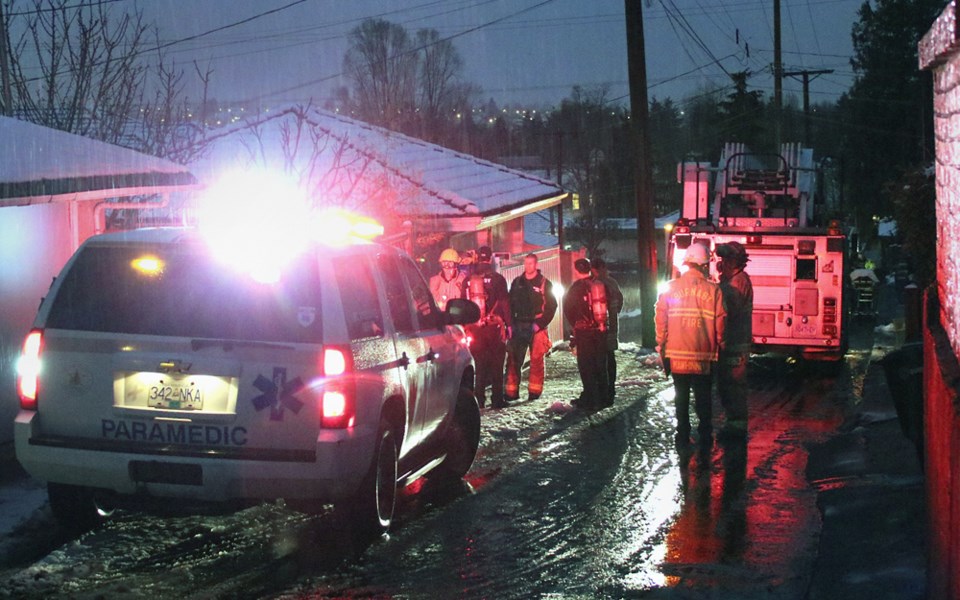Burnaby firefighters are discussing crew safety after carbon monoxide poisoning sent nine people, including two paramedics, to hospital during a medical call at a Burnaby home.
Emergency crews were called to 3777 Venables St. at about 5:45 p.m. Sunday for a 30-year-old female who had collapsed in the basement suite, according to assistant fire Chief Erik Vogel.
Soon after B.C. Ambulance arrived, another resident collapse, and the two paramedics on scene also reported feeling dizzy by the time firefighters arrived, Vogel said.
“(Firefighters) suspected carbon monoxide, and they started getting everybody out,” he said.
One of the paramedics then passed out outside as a second fire truck arrived, Vogel said.
Fire officials suspect an improperly installed appliance, probably a recently installed furnace, was responsible for the deadly level of carbon monoxide, which was measured at 260 parts per million, compared to a normal level somewhere between zero and 9 ppm, according to Vogel.
Firefighters, wearing their station uniforms instead of turnout gear with oxygen tanks, had responded to the call as a medical emergency, he said.
“We wouldn’t normally wear (turnout gear) on a medical call,” he said. “That’s the problem with rescuers dying is that they don’t know when they enter.”
The fire department has portable gas monitors, according to Vogel, but they are expensive.
“They’re designed to be worn on your body,” he said. “When it triggers, it tells you to get out. Well, we only have one on a truck, so we have to actually go get it and bring it back in to tell us if that’s the problem.”
Sunday’s incident has sparked discussions around the department about how to better deploy the monitors, according to Vogel.
“What we’ve talked about today, and I don’t know if this will happen, but, rather than keeping it in the truck, why not carry it on the medical kit,” he said. “It would go off immediately when they enter the room, and then they’d realize they’re not dealing with a medical call.”



